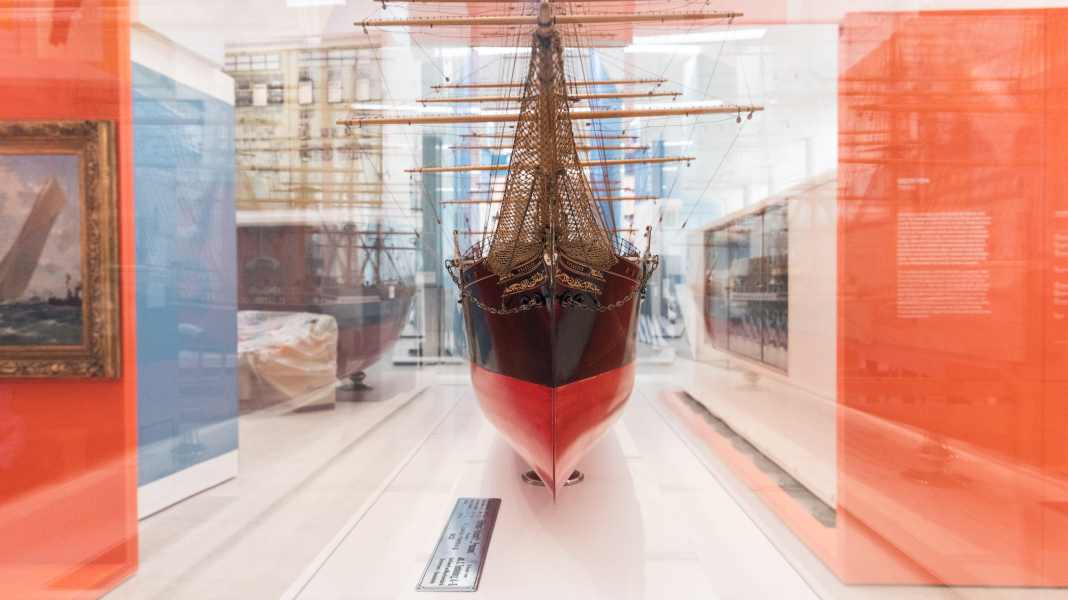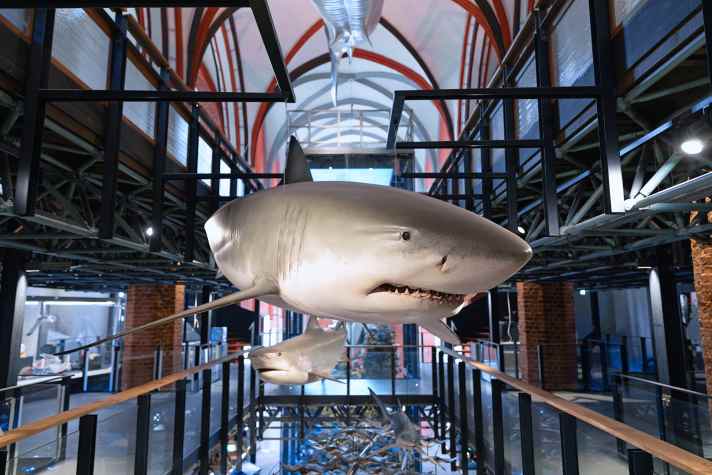
German Maritime Museum (DSM)
The German Maritime Museum (DSM) in Bremerhaven recently opened its new permanent exhibition "Ship Worlds - The Ocean and Us", where it answers questions such as: How does a ship float? How is it constructed? What does a ship consist of? What does a ship do with the sea? And how does research shipping gain knowledge from the sea?
After around two years of construction, the 2,800 square metre exhibition invites visitors to discover ships and their stories, learn about the forces of the sea and see how they are handled.
In the five themed areas "Shipbuilding", "Ship and Physics", "Ship and Environment", "Ship and Equipment" and "Research Shipping", 2,000 exhibits from two centuries can be discovered. Many of them come from the DSM collection and are being shown in an exhibition for the first time. Others have been made available by research institutes such as the Alfred Wegener Institute, the Geomar or organisations such as the Bremerhaven Seamen's Mission.
The museum overview:
Behind the intro area with more than 1,500 model ships, the exhibition in the shipbuilding area raises the question of how a ship is built. The 34 metre long and 50 tonne research ship installation in the middle of the building shows how research is carried out on and with such a ship. Numerous hands-on stations invite museum visitors to explore the ship.
The "Ship and Physics" section uses experiments and a look at the objects to provide information on the extent to which dealing with the laws of the sea has contributed to the relationship between man and the sea. In the "Ship and Environment" area, objects such as the harpoon gun, the giant sperm whale skeleton and a motorised fishing boat encourage visitors to reflect on mankind's relationship with the oceans.
Oceanographic Museum
The Oceanographic Museum in Stralsund in the Old Town, part of the German Maritime Museum, was reopened a few days ago after almost four years of modernisation. Following the modernisation, it now has a floor space of 7,500 square metres. Immediately after the newly designed entrance area, guests are greeted by an impressive multimedia presentation of a hunt for a shoal of sardines. The subsequent exhibition tour is dedicated to the development of marine life and its diversity, highlights the interactions between humans and the sea and shows strategies for sustainable fishing.

New airy showcase bands stretch like gentle waves over two floors. On the upper floor, faithfully recreated habitats with prepared and modelled animals trace the path from the Antarctic to the Arctic. A 15 metre long biodiversity wall pays tribute to the often underestimated diversity of marine invertebrates such as octopuses, jellyfish and crabs. Particularly popular objects, such as the leatherback turtle "Marlene", the five-metre-high original coral reef pillar from the Red Sea and the famous fin whale skeleton in the choir are still on display. The globe from the former entrance area is now used for a digital display with marine themes.
The cantilevered framework of the upper exhibition levels has been given openings up to 14 metres long for the installation of original-sized models of marine animals. The figure maker Peter Ardelt from Dresden created impressive replicas of sharks, dolphins and a Bryde's whale. At ten metres long, the largest model is a whale shark that floats above other different species of shark under the vault.
The German Oceanographic Museum has four locations: the Oceanographic Museum in the old town, the Ozeaneum on the harbour island, the Natureum Darßer Ort and the Nautineum.
